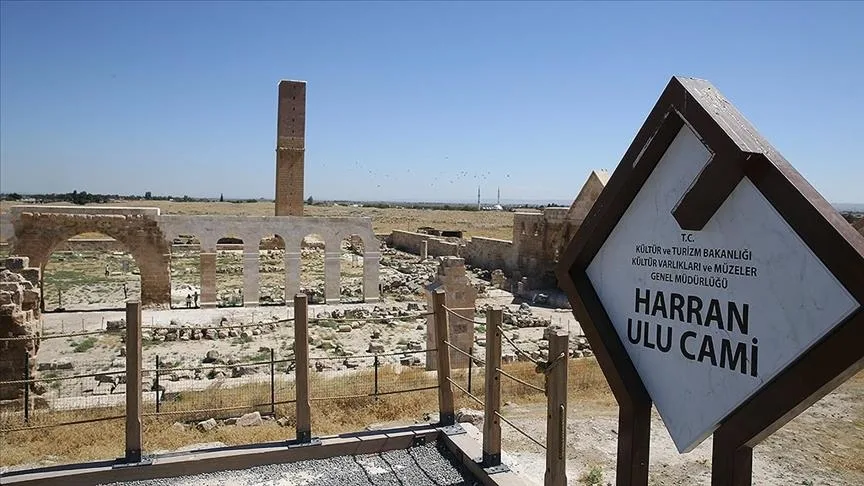Archaeologists have discovered one of the oldest settlement areas in the world, which is part of UNESCO's World Heritage Tentative List.
Archaeologists recently unearthed the remains of a fifth-century church during excavations at the Harran Ruins in southeastern Turkey. The region is known for its ancient settlements and is listed on UNESCO's World Heritage Tentative List.
Mehmet Onal, head of the Archaeology Department at Harran University and leader of the excavation team, revealed that these excavations are revealing the ancient treasures of Harran. Currently, their focus is on the expansive church structure.
Located 200 meters north of the Great Mosque of Harran, the church is notable for its size. Onal described, "We have excavated a significant portion of the church, which is quite large. We are currently exploring its northern nave and have uncovered most of it."
The church considered one of the largest in southeastern Turkey during its time, stretches over 70 meters long and is constructed with cut stone blocks. During their excavations, archaeologists also discovered glass mosaic tesserae, primarily used on walls and arches.
Onal noted that the floors of the churches built in this region during the Eastern Roman/Byzantine Empire period typically feature mosaic designs. We anticipate finding similar mosaic floors in this church."
Onal further explained the church's tumultuous history, stating, "The church suffered from looting and destruction during the Mongol invasions of the 13th century, and it also endured damage from natural disasters."
He added, "The northern nave's wall has visibly tilted due to earthquakes, providing clear evidence of the church's past seismic encounters."
This excerpt summarizes the main findings and historical context of the excavations at Harran Ruins regarding the fifth-century church.
Byzantine Empire
The Byzantine Empire existed from 330 to 1453. It is often called the Eastern Roman Empire or simply Byzantium. Constantine I (r. 306-337) founded the Byzantine capital at Constantinople. The Byzantine Empire varied in size over the centuries, at one time or another, possessing territories located in Italy, Greece, the Balkans, the Levant, Asia Minor, and North Africa.
Byzantium was a Christian state with Greek as the official language. The Byzantines developed their own political systems, religious practices, art, and architecture. These were all significantly influenced by the Greco-Roman cultural tradition but were also distinct and not merely a continuation of ancient Rome. The Byzantine Empire was the longest-lasting medieval power, and its influence continues today, especially in the religion, art, architecture, and laws of many Western states, Eastern and Central Europe, and Russia.


